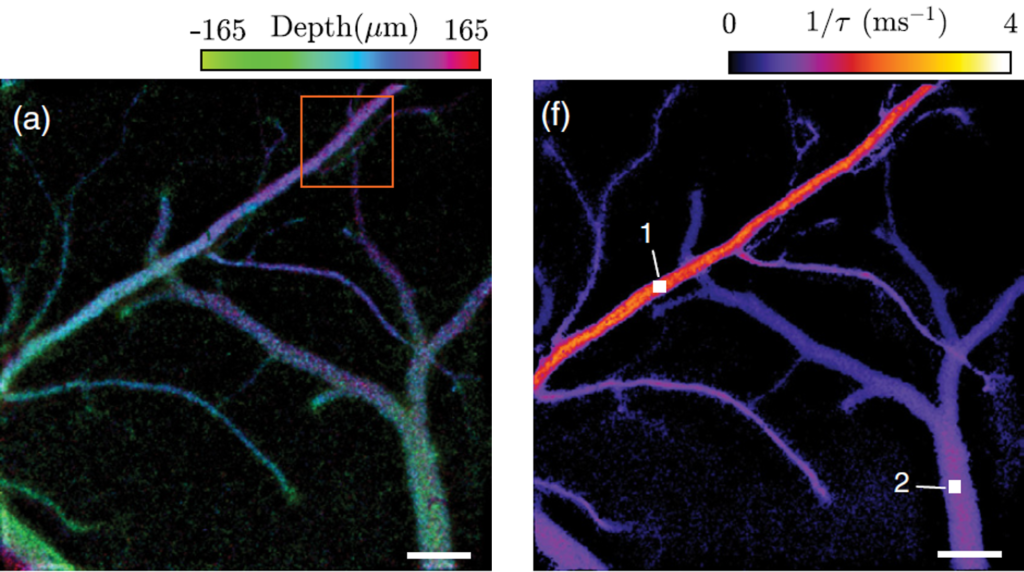Laser speckle contrast imaging
Summary: Laser speckle contrast imaging (LSCI) can be used to evaluate blood flow based on spatial or temporal speckle statistics. We describe a novel strategy for evaluating the speckle correlation time that does not require numerical fitting of data. In addition, we describe a technique to correct for bias errors when evaluating speckle correlation time that result from limited sampling statistics. The accuracy of the correlation time is undermined by out-of-focus image blur. We show how the fraction of dynamic versus static light scattering is dependent on focus, and describe a deconvolution strategy to correct for out-of-focus blur. With the aid of a z-splitter prism, which enables instantaneous multifocus imaging, we demonstrate depth-resolved LSCI that can robustly extract multi-plane structural and flow-speed information simultaneously. These methods are applied to in vivo imaging of blood vessels in a mouse cortex and provide improved estimates of blood flow speed.
- S. Zheng, J. Mertz, “Correcting sampling bias in speckle contrast imaging”, Opt Lett. 47, 6333-6336 (2022). link
- S. Zheng, J. Mertz, “Direct characterization of tissue dynamics with laser speckle contrast imaging”, Biomed. Opt. Exp. 13, 4118-4133 (2022). link
- S. Zheng, S. Xiao, L. Kretsge, A. Cruz-Martin, J. Mertz, “Depth resolution in multifocus laser speckle contrast imaging”, Opt. Lett. 46, 5059-5062 (2021). link

Left: Dynamic fraction associated with blood vessels; Right: Inverse speckle correlation time